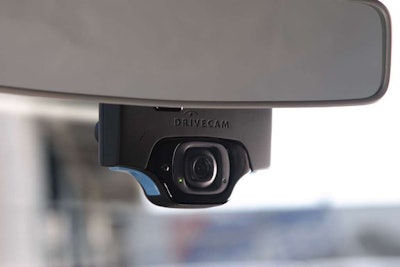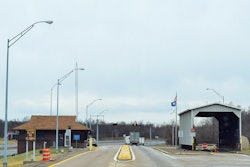 NTSB says all fleets and owner-operators should be using video event recorders and hopes to see regulatory action requiring such.
NTSB says all fleets and owner-operators should be using video event recorders and hopes to see regulatory action requiring such.The National Transportation Safety Board released its annual Most Wanted List of safety regulations this week, and six of the 10 items on the list could have an impact on the trucking industry and truckers.
NTSB, while a government agency, has no regulatory power. Its job is so to recommend to regulators ways to prevent crashes and deadly accidents across all modes of transportation, based on studying accidents that have occurred and programs and technologies available.
The six recommendations on its 2016 most wanted list related to trucking include:
Reducing fatigue-related accidents
NTSB wants trucking companies and operators to use electronic logging devices, which will be a requirement by Dec. 2017, and says “companies must establish fatigue risk management programs and then continually monitor their success to reduce fatigue-related risks.”
Expanding medical fitness for truck drivers
NTSB said the Federal Motor Carrier Safety Administration has recently required training and certification for healthcare providers who perform medical exams, but “there is no mechanism to ensure recommended guidelines are followed.” NTSB adds that “chiropractors and other healthcare professionals with no experience prescribing medications are considered acceptable medical examiners.”

NTSB said it has made recommendations for a comprehensive medical certification system for safety-critical transportation personnel with the goal of ensuring they are “medically fit for duty before they operate a vehicle.”
Promoting availability of collision avoidance technologies in highway vehicles
NTSB says a variety of in-vehicle collision avoidance technologies could help to mitigate or prevent many crashes.
Technologies such as collision warning, adaptive cruise control, autonomous emergency braking, lane departure warning, blind spot detection and advanced lighting technology help drivers by improving their view of the road, alerting them of upcoming danger, or warning them if they make an unusual maneuver that could increase the risk of a crash, NTSB says.
NTSB said federal agencies “must continue to work to develop performance standards for these technologies and rate their effectiveness.”
Disconnecting drivers from distractions
NTSB hopes to eliminate the use of cell phones and all portable electronic devices.
In Dec. 2012, NTSB called for a ban of all driver portable electronic devices, and currently, 14 states and Washington, D.C., ban the use of cell phones while driving. D.C. and 37 states restrict the use of cell phones by novice drivers, and 44 states and D.C. ban texting and driving, but none ban the use of hands-free devices.
Ending substance impairment by vehicle operators
NTSB recommends states lower the legal blood alcohol content legal limit from .08 to .05 or lower and says, with other drugs, more and better data is needed to understand the relationship between the amount taken and crash risk.
For commercial industries such as trucking, NTSB says operators and enforcement authorities “must not neglect required post-accident testing,” and adds that states “should increase collection, documentation and reporting of driver BAC test results, both for alcohol and drugs, following crashes.”
Expanding use of video and event recorders
For highway operations, NTSB recommends implementing on-board video recording systems, such as video event recorders for heavy commercial vehicles, and for motor carriers to use recorded information for operational and safety oversight.
NTSB says regulations should require the use of “crash-resistant data,” audio and image recorders, but until then, “operators should proactively procure this technology to improve the operational and safety oversight” of their operations.














